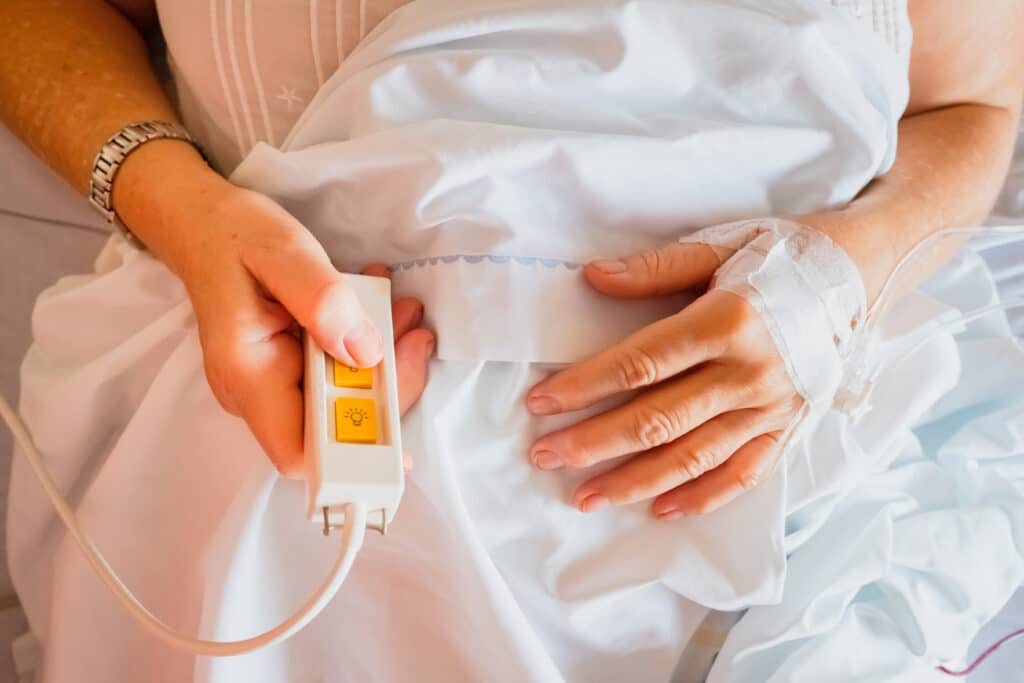Whether in a hospital, long-term care facility, or retirement home, most individuals have encountered a nurse call system at some point in their lives. While its purpose is simple – allowing patients to contact their nurse/nurse’s station easily – the elements that comprise the system are anything but. In fact, they can be quite complex.
In its most basic form, a nurse call system consists of two primary components: the bed interface and nurse’s station console. Combined, these two pieces allow the patient to press a button bedside, not only alerting the nurse’s station they need assistance, but allowing them to speak directly with one another to determine how they can be of help. A corridor dome light may also be installed to give the nurse a visual indication of calls originating from the bedside, bathroom, and code stations as well as service requirements and staff presence.
In more complex deployments a nurse call system may include:
- Integration into the entertainment systems to allow control of the television.
- Installation of bathroom pull cords to allow for assistance requests away from the bed
- Integration into the overhead paging to alert for codes
- Integration into the PBX to allow for other phones to be called in addition to the nurse station console.
Historically, nurse call systems required a significant amount of detailed wiring infrastructure to tie all of the necessary components together. However, with the ever-increasing capabilities of wireless technology, many facilities have shifted to remote nurse call systems, eliminating a vast majority of wiring requirements which ultimately lowers the cost of installation and maintenance of the system.
Mobile devices allow nurses to multitask even more, allowing them to answer calls while away from their station or while assisting another patient. Integration of wireless devices also are beneficial for:
- Ease of patient use. Having the nurse call system incorporated into a patient’s bed controls eliminates the need for multiple remotes.
- Prevent potential abduction. Combining a mobile device with the hospital’s Infant Abduction Systems can limit a patient or visitors’ ability to leave a particular area of the facility.
- Impede patient wandering. Integrating a mobile device with the facility’s Wander Management Systems allows for patient real-time location services.
While the benefits of a nurse call system can certainly outweigh the negatives, challenges can present themselves when system integration is required. Because the systems function independently of one another, they require separate installation and maintenance. Oftentimes, this requires multiple vendors. Coordination between all of the required vendors is paramount for success.
In the end, however, a nurse call system allows nurses to provide the best care for their patients. It offers security, ultimately providing peace of mind for patients and their loved ones. Contact VP Engineering today to see how we can provide the same peace of mind to the residents, families, and staff of your facility!
______
About VP Engineering
VP Engineering is a top Charlotte-based MEP design firm offering engineering expertise in senior living, multi-family, hospitality, and retail/commercial markets worldwide. With experience in a wide range of building types, our MEP engineering services help keep projects on budget and achieve your goals. Learn more at vpce.com.



